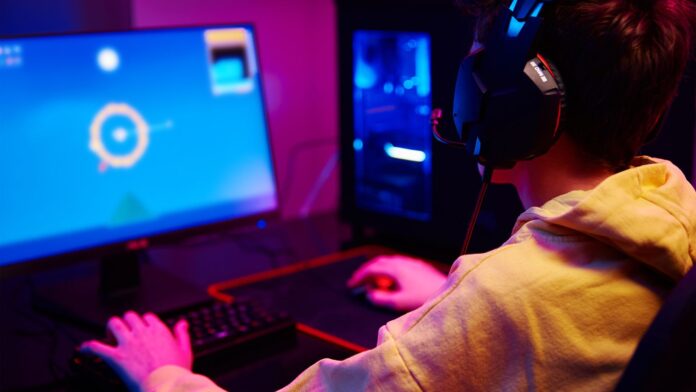Navigating through the competitive landscape of Dota 2 can be as exhilarating as it is challenging. Especially when you hit that sweet spot known as the 4k MMR (Matchmaking Rating), a tier where players start to distinguish themselves with more refined skills and strategic understanding. It’s a battleground teeming with aspiring pros and seasoned veterans alike, each vying for supremacy in this multiplayer online battle arena.
Hitting the 4K mark in Dota 2 isn’t just about bragging rights; it signifies a deeper comprehension of game mechanics, hero synergies, and tactical executions. My journey to this milestone was filled with countless hours of gameplay, learning from mistakes, and adapting strategies against an ever-evolving array of opponents. This echelon is where theoretical knowledge meets practical application, demanding both quick reflexes and sharp minds.
4k Dota 2
Definition of 4k Dota 2
When we talk about ‘4k’ in the context of Dota 2, it refers not to screen resolution but to a player’s Matchmaking Rating (MMR). To clarify, a player with a 4k MMR has reached a level of skill that places them above average among the game’s millions of players. It’s an accolade many strive for and few achieve. Reaching this threshold indicates you’ve mastered various aspects of the game including:
- Strategic gameplay
- Hero proficiency
- Team coordination
Players in this bracket are often very competitive and have a deep understanding of game mechanics. They’re capable of executing complex strategies and adapting to the dynamic nature of each match.
Importance of 4k Dota 2
Being part of the 4k MMR bracket in Dota 2 is significant for several reasons. Firstly, it’s seen as a stepping-stone towards becoming semi-professional or even professional in esports. Secondly, players at this level can enjoy more structured and challenging games since they’re matched with and against others who have similar levels of understanding and commitment to the game.
Here’s why reaching such an MMR is crucial for serious players:
- Recognition: Achieving a high MMR can lead to recognition within the community.
- Opportunities: Players may find doors opening for joining better teams or participating in exclusive tournaments.
- Skill improvement: Playing at this level forces constant learning and adaptation which further improves one’s skills.
In essence, climbing into the ranks of 4k MMR isn’t just about bragging rights; it represents personal growth, increased competitiveness, and potentially paves way for opportunities within the larger esports arena.
Smoother Gameplay
Lastly, smoother gameplay might be one of the most significant benefits of playing Dota 2 at 4k resolution. Every gamer knows how essential fluid motion and seamless transitions are during high-stakes matches. Higher resolutions mean reduced screen tearing and stuttering which often plague lower settings. It makes dodging Pudge hooks or landing precise Chronospheres by Faceless Void less frustrating and more rewarding due to minimal lag.
Here’s what smoother gameplay entails:
- Reduced input lag: My commands feel almost instantaneous.
- Better frame rate consistency: Less fluctuation during intense moments keeps me focused on strategy instead of performance issues.
So whether it’s split-second decision-making or simply appreciating a tranquil moment watching creeps march down lanes at sunset, playing Dota 2 in 4k definitely elevates my overall experience.

How to Play 4k Dota 2
System Requirements
Playing Dota 2 in 4K resolution offers an incredibly immersive experience but it demands a robust system to run smoothly. Here’s what you’ll need:
- Processor: A quad-core processor, ideally Intel i5 or better.
- Graphics Card: At least an NVIDIA GTX 1070 or AMD equivalent; the newer the model, the better your experience will be.
- RAM: Aim for at least 8GB, although I’d recommend going for 16GB to ensure seamless gameplay.
- Storage: An SSD would significantly reduce load times and improve overall responsiveness.
If you’re unsure whether your rig can handle it, check out online benchmarks comparing your hardware with these requirements.
Configuring Graphic Settings
Once you’ve got the hardware sorted, tweaking the in-game settings is crucial. Head over to ‘Options’ and then ‘Video Settings’. You should:
- Set your display mode to “Exclusive Fullscreen” for optimal performance.
- Adjust the screen resolution to 3840×2160 which is true 4K.
- Experiment with render quality; higher values improve visuals but may impact performance.
Remember that each setting can affect FPS (frames per second). It’s often worth sacrificing a bit of visual fidelity for smoother gameplay.
Prioritizing Performance or Visuals?
The eternal debate: do you chase breathtaking visuals or buttery-smooth performance? It’s all about balance. For competitive play:
- Focus on maintaining at least 60 FPS as this provides fluid movement and responsive controls.
- Consider lowering shadow quality and texture details if frame rates drop during intense battles.
However, if you’re playing casually and want those stunning visuals:
- Crank up those graphic options as long as they don’t cause significant lag spikes.
Ultimately, personal preference dictates your settings – just make sure they complement your play style!


